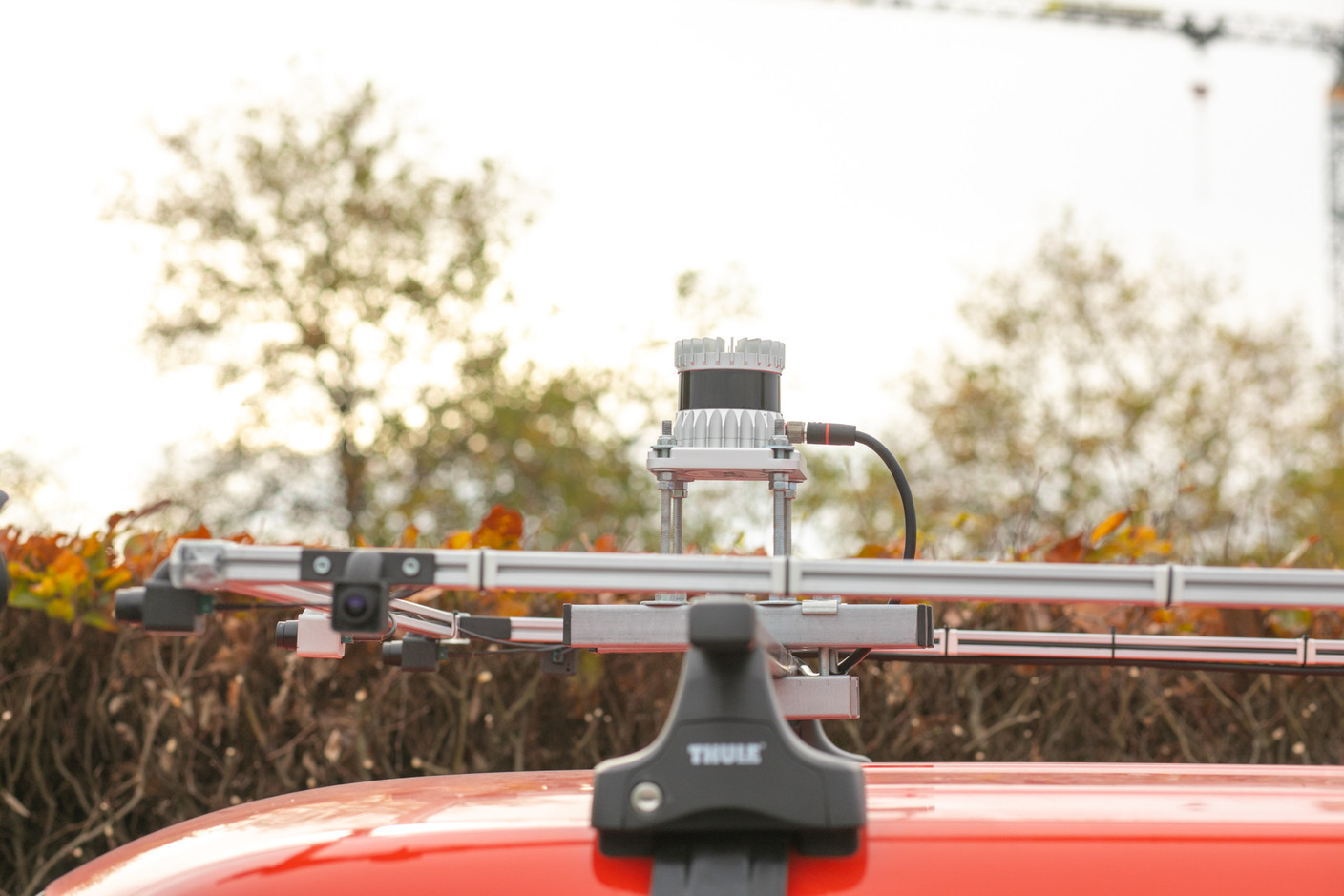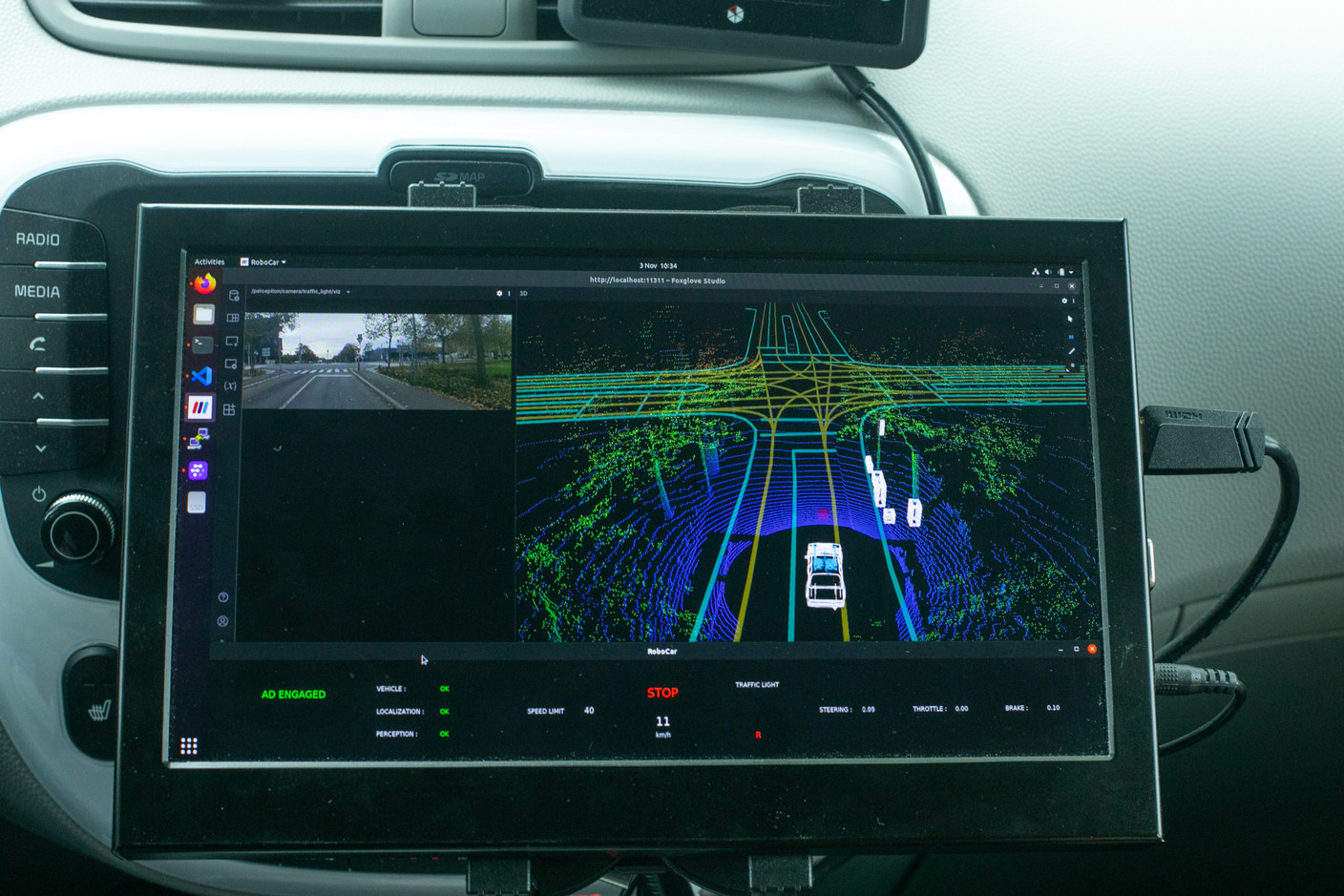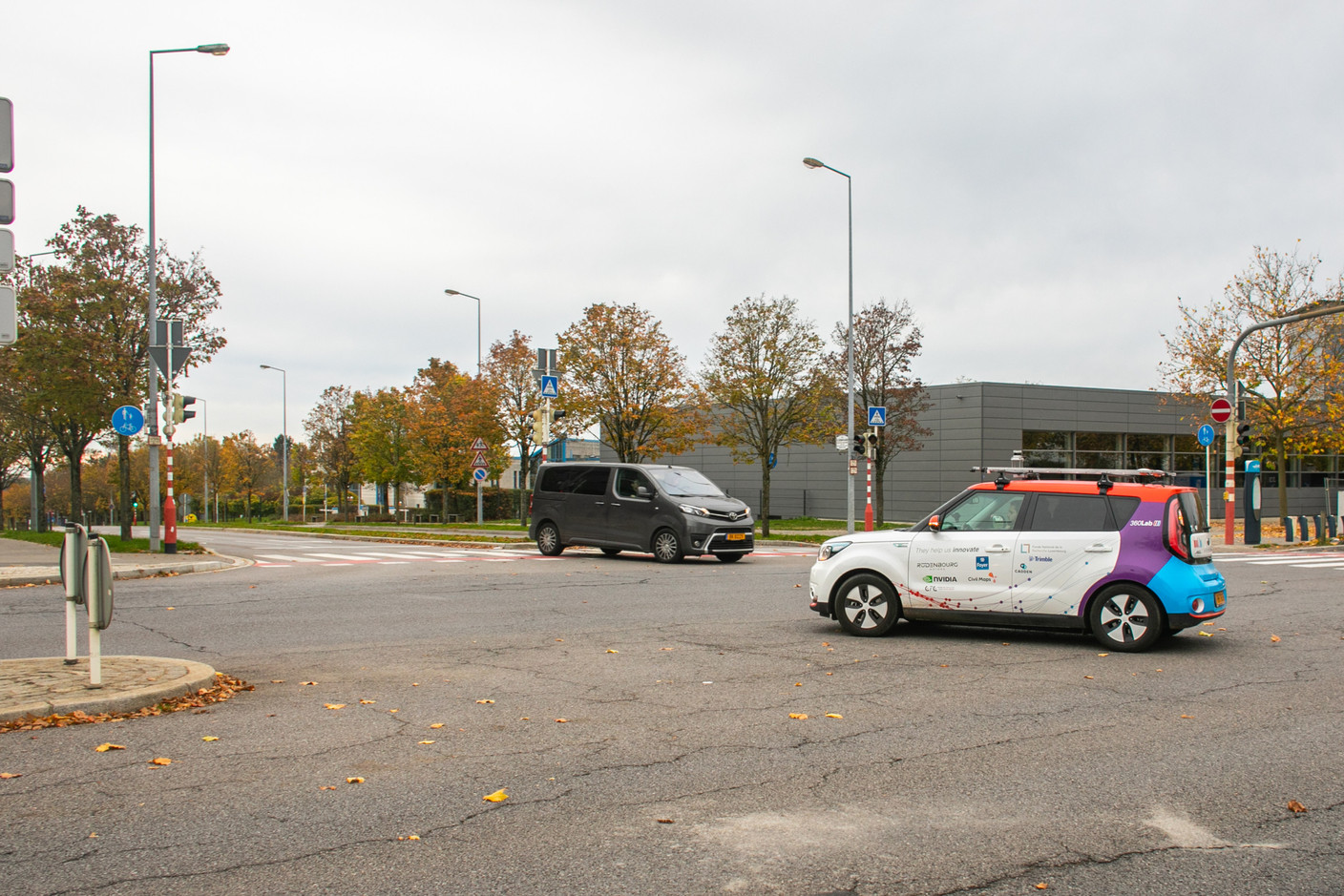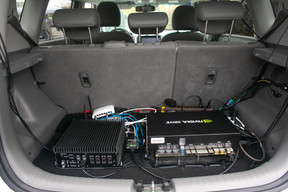Mehdi Testouri has his hands on the wheel. Winner of an excellence grant from the Société Stellar Foundation nearly ten years ago, the researcher-engineer only agrees to raise his hands off the wheel for a second, on a straight stretch of ten metres, to satisfy the photographer’s whim. Caution is the order of the day.
The Ministry of Transport has granted exceptional permission for the car to travel on public roads under strict safety rules. The car is programmed in a “defensive manner” as the project leader, Professor Raphaël Frank, explained. In other words, it brakes before the traffic light turns red, as soon as a car in front is likely to be too close, as soon as another vehicle comes too close to it--cars driven by humans are full of surprises--or as soon as a pedestrian or cyclist risks crossing its path.
The Kia is loaded with tons of technology: a brain in the trunk that digests data in real time, a 64-laser lidar that models the direct environment within over 200 metres at 360 degrees in real time, and six cameras with artificial intelligence, three at the front, two on the sides and one at the back. It relies on an ultra-high-definition map of the neighbourhood, the only one available in Luxembourg at the moment.
“The last thing we need is a very precise idea of where the vehicle is,” Frank said. “A GPS, like the one you have in your smartphone, would give you an idea to within 10 metres, which is obviously not enough for an autonomous car. We need to know exactly where we are on the road, so we are using a real-time kinetic system, a GPS connected to all the antennas that exist around here to correct the position signal down to three to five centimetres. That’s enough to track a trajectory. It’s like a much more accurate Google Map with a lot more information.”
GM’s Cruse on the verge of crashing
Parked in the Konrad Adenauer car park, next to four parking spaces reserved for this event to which journalists have flocked, the car makes a short three-kilometre loop in Kirchberg. It made the trip at a slow and steady pace, and without human intervention. Contrary to popular belief, a self-driving car is not either autonomous or not autonomous, it has a certain degree of autonomy. On a scale of 1 to 5, where 5 is the degree to which a driver could do anything other than pay attention, the ’s Kia is at “3.5-4,” Frank said. Getting there is already something special.
Read also
Besides, Frank said with a smile, “Elon Musk promised ten years ago that we would be there in five years, and we’re five years past the deadline. Cruse, the General Motors programme, spends $5m a day,” which is more in one day than the entire budget of the Luxembourg project. And it runs almost exclusively at night, because there is less traffic. Its deficit has reached $1.4bn. He is the last one to believe in it for the beginning of 2023 after Ford closed Argo AI. According to McKinsey, nearly $10bn have been invested in autonomous car development since 2016 without any return on investment.
In the IT world, it is called the 90-90 rule: after completing 90% of the development... only 90% remains to be completed. “We are still a long way from the autonomous car,” said Frank. “There are societal aspects, legal aspects and technical aspects.” But just like their self-driving car, the researchers are continuing to move forward intelligently.
Originally published in French by and translated for Delano










